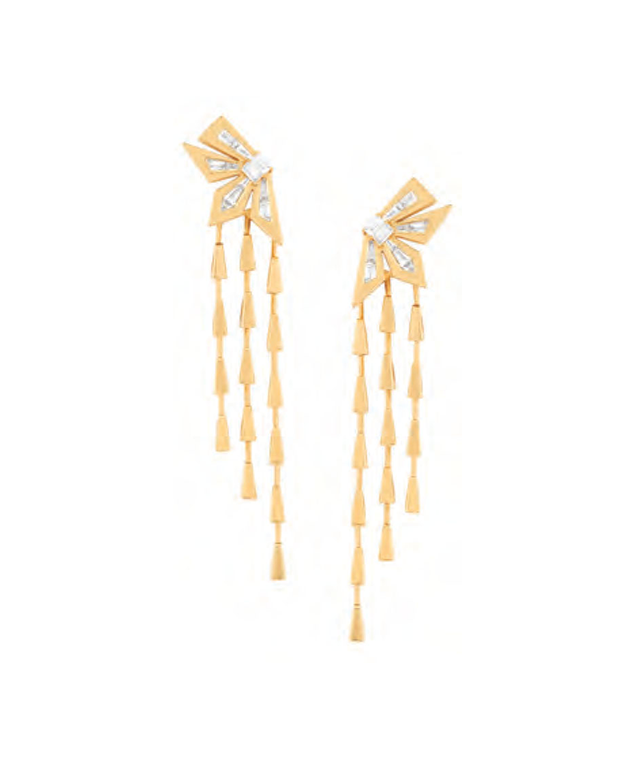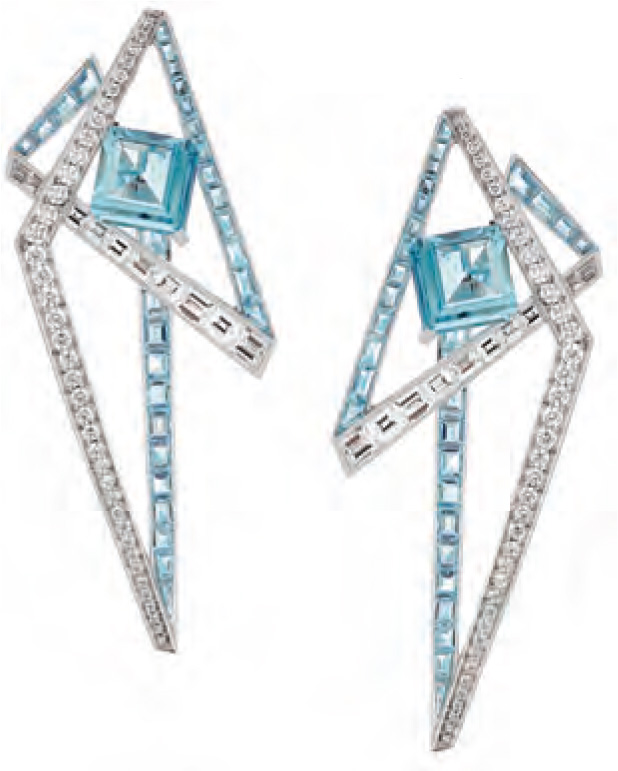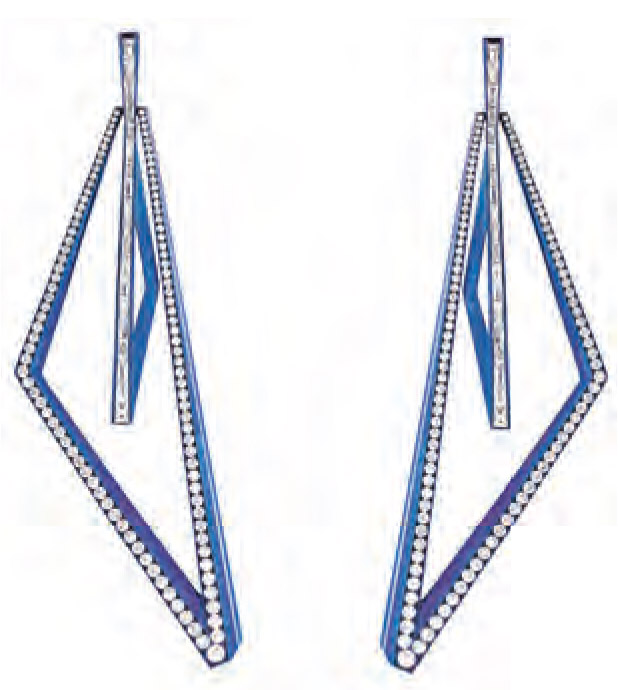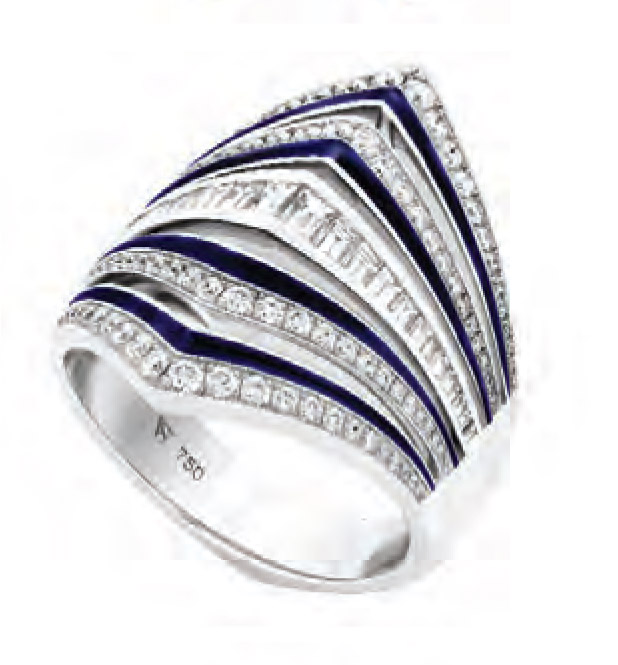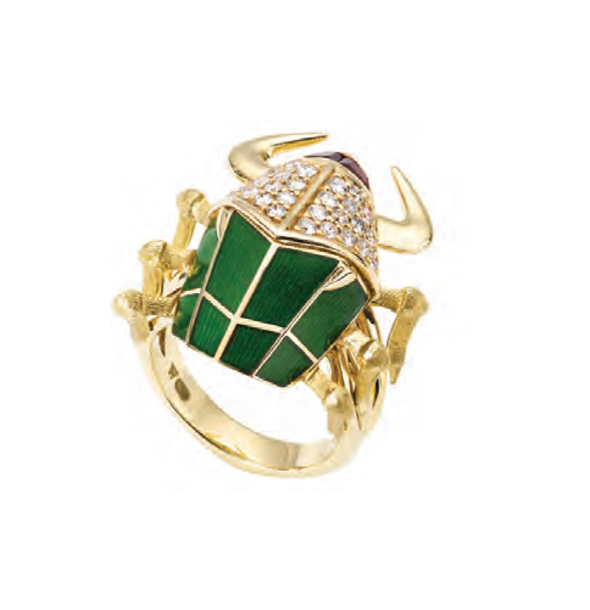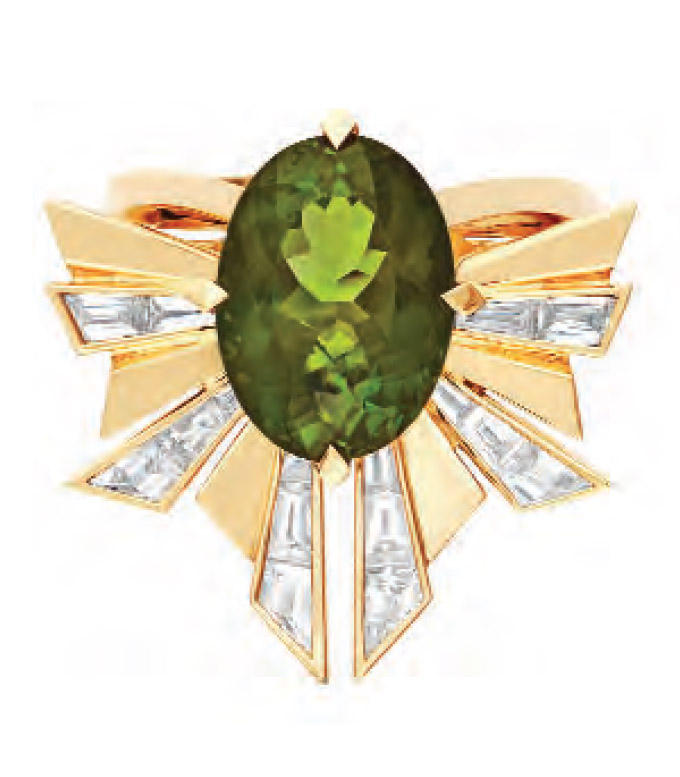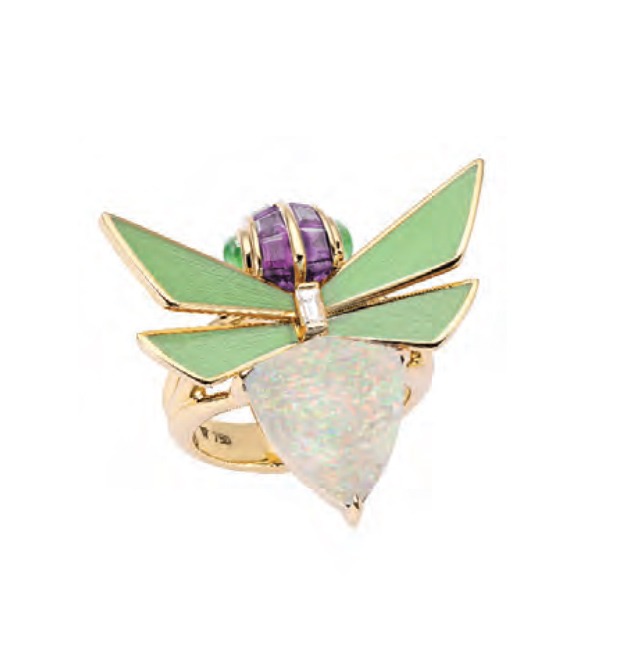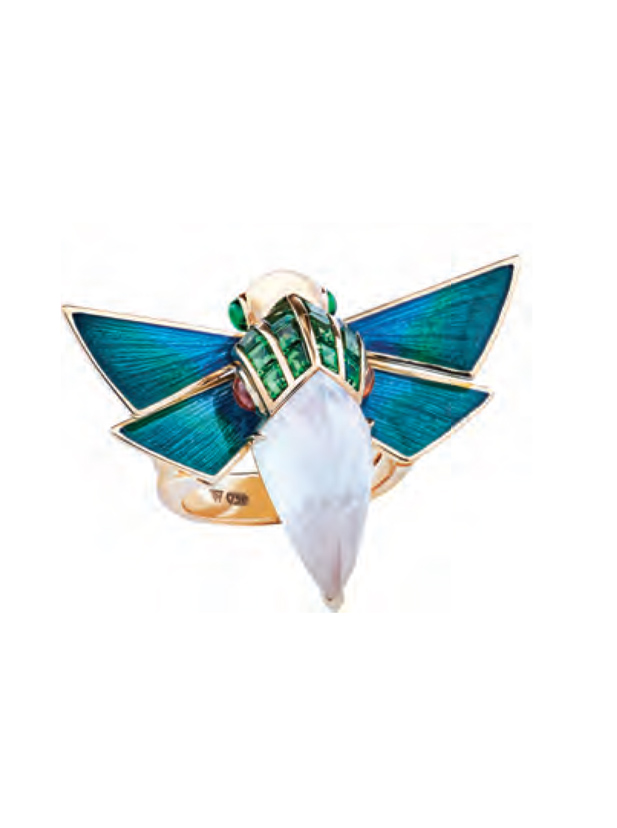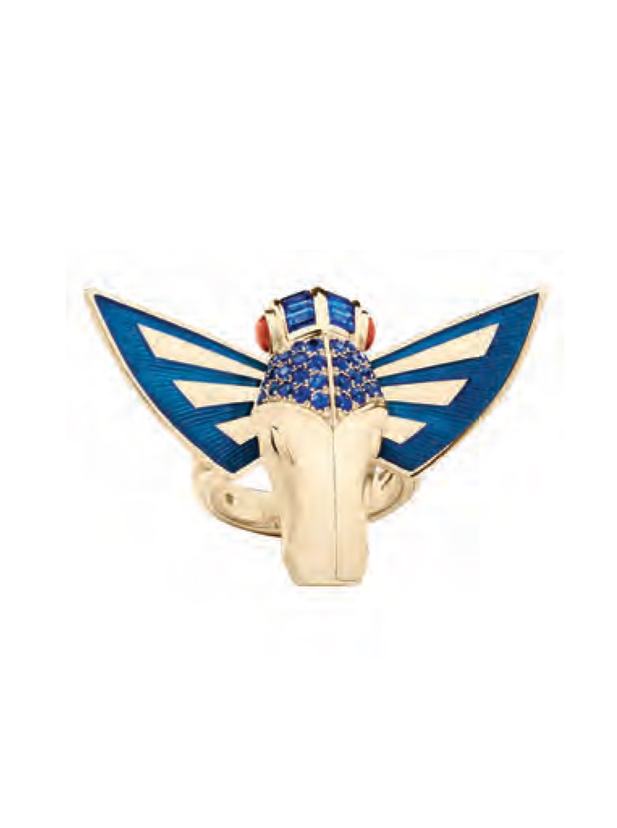Star jewellery designer Stephen Webster, founder and creative director of the eponymous brand in London, is in India at the invitation of the GJEPC, and speaks about his process, his preferences and how India has influenced them.
Stephen Webster, founder and creative director of the eponymous brand in London, is in India at the invitation of the GJEPC. He will be the chief guest at The Artisan Awards at a gala night in Mumbai on February 12.
Webster, who was awarded an MBE (Most Excellent Order of the British Empire) in 2013, is an outstanding jewellery artist, known for combining artfulness with audacity in his high-end pieces. His near-Gothic but spirited pieces are provocative, infused with high drama – the uninitiated may refer to some of his past collections inspired by lobsters, bats, the crime fiction of Agatha Christie and more. Stephen’s strong technical expertise gives him an advantage in executing complex jewels crafted mostly in gold, a metal that he loves to work with.
Beneath his flamboyant persona lies an altogether different person – an artisan who gets a creative high when working with his tools. His workbench is the place where he is gripped by a feverish frenzy to experiment hands-on with gem cuts and metal textures. There’s excitement in the air as we, at GJEPC, prepare to welcome him to India again. His last visit as the Council’s guest was at the India International Jewellery Week (IIJW) held in Mumbai.
Excerpts from a free-wheeling conversation on a long-distance call with the rock star of the jewellery industry.
How does it feel to be back in India after a long time?
I am excited. I have not been in India for some years. All my trips to India have been great, and I am happy to be coming back.
This year’s theme for The Artisan Awards is Architectural Gems. It’s one subject that is close to your heart, especially since your latest two collections, Dynamite and Vertigo, are structured in form.
Because I have been a jeweller for 45 years, I do tend to explore lots of inspirations for the direction where I am going. For the last two-three years, I have been looking at the sort of extraordinary architecture that feels like it plays with a bit of illusion; almost playful architecture, conceptual takes on what a building can be. We use that and extract elements that we could then incorporate into a jewellery collection. Vertigo has been a big success for us and it’s very much about playing with perspectives. It’s the sort of thing that architects like to do now and again. In some ways, it has got that sort of inspiration.
Tell us more about Vertigo and Dynamite
The collections are part of a trilogy – they are not connected in any form other than it was about this idea about things not being what they first appear to be. The three collections were Jitterbug, Dynamite and Vertigo. We released Jitterbug and Dynamite first. And last year, Vertigo completed the story. Both Dynamite and Vertigo were, for me, a bit of a new direction. They are very much about angles, precision, and using cuts of stones that were different to the more organic forms that I often play with. It’s been a good challenge for us, and I like to challenge my clients as well otherwise it all gets to be a bit boring. Those two collections are becoming more of a continued direction for us to explore.
Your previous collections have always been near-Gothic, with bats, lobsters and daggers – unexpected combinations leap out at us through your collections!
You are right. If you have got a body of work that’s quite huge, you feel that you cover a lot of ground. When I did the collection called the Seven Deadly Sins, I did it for only one year, but it became such an iconic collection that those seven rings can define a bit of what you are. I think some of these big storytelling pieces are what define you. They can be something figurative, something playful, and could be a bit dark in inspiration. I never go to a place that’s really dark – I will go towards that place and then I’ll add a bit of humour to it. I think people appreciate that I am not a Gothic designer. I am a bit more playful, and I love a lot of colour.
The two collections are different from each other… Vertigo is inspired by radically modern architecture, and Dynamite is about sharp, jagged silhouettes.
You are right. With Dynamite, the idea was that there was something that kind of exploded it and that created a kind of motion that became Dynamite, and it fragmented what may have been there before. With Vertigo, it’s more about playful perspectives and it visually stuns people, which in a piece of jewellery is quite a challenge in itself, because jewellery by nature is not very big. The success that we found in it has been with the more extraordinary pieces, like those that I made in titanium, so they got big volume, using enamel, baguette cuts, stones like spinels, diamonds to create an illusion of perspective.
You have worked a lot with titanium – does it give you that freedom of expression as a creative person?
Yes, it does. I first started working with titanium about 16 years ago and that was a real process of discovery because as far as I was concerned, the titanium jewellery I was creating wasn’t very exciting. But it has these qualities of being very light, strong and you can colour it. I thought that was interesting, but I needed to form it. And forming titanium was the biggest challenge. So I took it to a bit of an extreme by creating this collection that was based on Japanese fighting fish, which was very sculptural. I only made about four pieces, one of them was a bracelet, which is now in the Victoria and Albert Museum in London, partly because it was such an unusual piece at the time to be made in titanium; it was so sculptural.
Going forward, I am much more familiar with the challenges you can overcome, and then where you may not want to go with titanium – because it is not like gold. Gold, as you know, does everything. If you shout loudly at a piece of gold, it will do something for you, but titanium doesn’t want to do anything.
You are happiest at the workbench with your tools, experimenting with various gem cuts. By your own admission, you are more of an artisan. Is that what gives you a creative high?
If I go back to my early years in jewellery, I went to art school when I was 16, to be a fashion designer. I very, very quickly realized that probably wasn’t for me. In an art school, you start to see what else is going on, and the thing that drew me in was jewellery – not by design, because design was not the biggest part of what was going on. It was all about technique, all of the art school skills that were required for learning to make a piece of jewellery, and that was what totally seduced me into this industry. The craft skills are amazing!
And I am talking to someone who lives in a country where the craft skills that are applied to jewellery are probably second to none. India is phenomenal and it’s all very much hand skills. And almost the first five years of my existence as a jeweller were, first of all, learning to be a really good craftsperson. And the next five years were about working with techniques that I’ve learnt in order to help me become more of a designer. Because I was never trained to be a designer. I was trained to be an artisan, a craftsperson.
But I found that with jewellery, if you master the techniques, you can apply yourself to become a designer. We are not like architects, we are not designing cars! We are designing things that people wear on their body and that are very much centred on the materials; you can’t avoid that. When you introduce a new material, you are working with precious gems… then I’ll go I don’t want my gems to look exactly the same as everybody else’s, so I want to start playing with the cuts of gems. And then I start to do hand engraving on a piece of metal that gave me texture that looks like tapestry. So it is all about using craft skills. And that led to my style. And I think I have never left that. Sometimes people say, ‘My God, everything about your jewellery looks so complicated!’ But you know what? I don’t know any other way of doing it.
Are there any collections inspired by India?
I want to say yes. When I first visited India with my wife, we were on vacation in Jaipur, where I wanted to go because of the gems, obviously.
Before that I wasn’t very familiar with Indian cut gems, except for maybe rose-cut diamonds, etc. Later in my life, I became more familiar with Indian gems and then I really started to see what is the spirit and the heart of the Indian jewellery industry. I mean, the bridal jewellery that goes with India is wow! I think what it’s done for me is it’s one more part of how much I love gems and Indians love gems, and then being bold, helps give you confidence in what you do. In that respect, I very much enjoyed my time there. And every time I’ve been there (in India) since that one time on holiday, it’s always been connected with work. So I’m always interacting with Indian jewellery and Indian jewellers… that’s inspiring for me.
I’m not going to make a collection of jewellery that looks like an Indian would have made it. But I love looking at the techniques and incorporating those – in some ways, it’s got incredible discipline. I love the Indian enamel work, cuts of gems, and they’re all things that I feel, somewhere along the line, I have a bit of the spirit of in my work.
Everyone compares you to Bob Dylan…
(Laughs) Now and again it’s either Keith Richards or Bob Dylan or someone, I don’t know why.
…Has Dylan’s philosophy rubbed off on you?
To be honest, I feel a bit like a nomad. I could maybe say I feel more like a Jack Kerouac than a Bob Dylan. I love the road, I love American roads – my biggest indulgence every year is I just drive in my 1969 Thunderbird around America. I’ve been everywhere for years with my best friend who’s American. And we feel a bit like we’re both Jack Kerouacs. It’s a romantic way of looking at a country that’s not always romantic. You know, it’s that idea of the road, and Bob Dylan’s got a bit of that about him, I guess.



